- Home
- Media Kit
- MediaJet
- Current Issue
- Past Issues
- Ad Specs-Submission
- Ad Print Settings
- Reprints (PDF)
- Photo Specifications (PDF)
- Contact Us
![]()
ONLINE
![]()
ONLINE

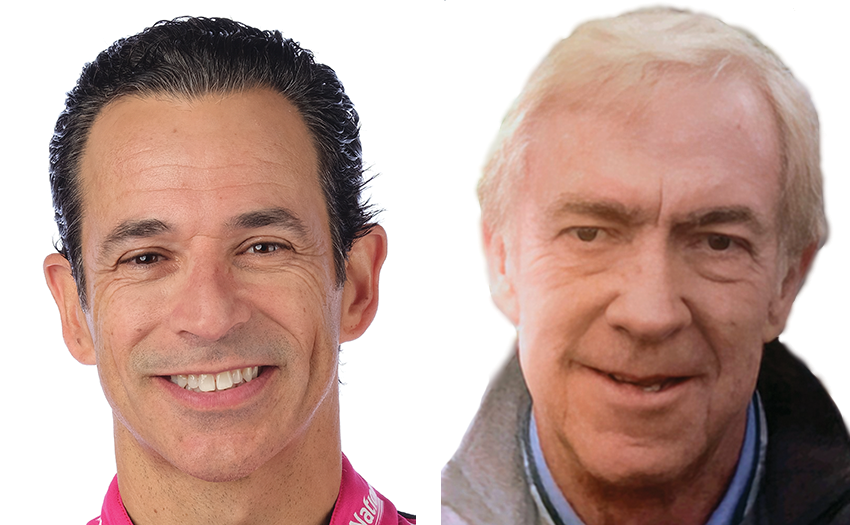
Helio Castroneves and Dr. Stephen Olvey
Passion and Purpose
Editors’ Note
Born in Sao Paulo, Brazil, when Helio Castroneves was two years old, his family moved to Ribeirão Preto. When he was 12 years old, his passion for racing started, always with the support of his parents, Helio and Sandra, and his big sister, Kati. Castroneves raced Go Karts from 1987 until 1991, collecting a National championship and two years of experience in World Cup CIK. In 1992, he moved to Formula Chevrolet, placing second in the Championship. In 1993 and 1994, he raced in F3 South America, finishing second place both years. In 1995, at 20 years-old, Castroneves moved to England to be part of the Paul Stewart Racing (PSR) team to compete in the British Formula Three Championship. While with the PSR team, he finished third in the 1995 British Formula Three standings. Castroneves made the move to American open-wheel racing in 1996 to compete in the Indy Lights Series for the 1996 and 1997 seasons. He was signed to the Tony Bettenhausen, Jr. team for the 1998 CART season. In 1999, Castroneves competed for Hogan Racing in CART. Destiny and Roger Penske took note of Castroneves’ talent and signed him to Team Penske for the 2000 CART season. The pairing of the quick driver and the superb machines of Team Penske quickly paid dividends as Castroneves scored his first series victory at the 2000 Detroit Grand Prix in his seventh start with the team. It was after this victory that Castroneves debuted his now-famous fence climb that he does to celebrate all of his wins. Castroneves competed in his first Indianapolis 500 in 2001 as Team Penske. He wasted little time in etching his name to the Borg-Warner trophy that goes to the race winner as he led 52 laps to pick up his first Indianapolis 500 Borg Warner trophy. In 2002, Team Penske moved to the IndyCar Series for full-time competition. He became the first driver to win the Indianapolis 500 in his first two starts – and the fifth driver to win consecutive Indianapolis 500s – when he took the checkered flag in the 2002 edition of the race. In 2009, Castroneves took his third Indianapolis 500 crown to become just the ninth driver to accomplish that feat. After that, Castroneves finished twice in second place at the Indy 500 (2014 and 2017). In 2018, he changed racing series, competed in the IMSA WeatherTech SportsCar series, still on Team Penske, but a different style of car and racing. The 2019 IMSA season marked the 20th year of Castroneves racing for Team Penske. In 2020, Castroneves and his teammate, Ricky Taylor, won the IMSA championship with four victories and four pole positions. In January 2021, he signed and won only one race with WTR for the 24 Hours of Daytona. In May 2021, Castroneves returned to Indycar, with a new team, Meyer Shank Racing, and in his first race for the team at Indianapolis, he won the Indy 500 for the fourth time, becoming only the fourth driver to win the race four times. For the 2022 season, Castroneves returned to a full season of Indycar, racing for Meyer Shank Racing, in the 06 car. He still possesses the speed and skill necessary to win at the highest levels of motorsports and he continues to have the drive and enthusiasm of an eager rookie racer. One of the most successful and popular drivers of his era, Castroneves is best known in racing circles as a four-time winner of the Indianapolis 500 and one of the winningest drivers in Indycar history. Castroneves resides in South Florida with his fiancé, Adriana, and their daughter, Mikaella.
Dr. Stephen Olvey is an associate professor of clinical Neurology and Neurosurgery at the University of Miami Miller School of Medicine. He is Vice Chair of the University of Miami Hospitals and Clinics Ethics Committee and the Jackson Health System Adult Ethics Committee. He served as the Director of the Neuroscience Intensive Care Unit at Jackson Memorial Hospital for 25 years. He remains active in motor sports as a member of the Fédération Internationale de l’Automobile Medical Commission, a consultant to Indy Car Series, and Motor Sports Director of the University of Miami Concussion Program. Dr. Olvey graduated from Indiana University Medical School in 1969 and soon thereafter became the Assistant Medical Director of the Indianapolis Motor Speedway. Three years later, he developed the first U.S. traveling motorsports medical team for the United States Auto Club (USAC). When Championship Auto Racing Teams (CART) separated from USAC, he became CART’s Director of Medical Affairs until 2003 when the original series became Champ Car. In 1982, Dr. Terry Trammell joined Dr. Olvey at CART and they have worked closely together ever since. Additionally, Dr. Olvey developed the medical program for the Circuit of Americas in Austin, Texas, as Chief Medical Officer for four years. He has published several articles on motor sports medicine, often collaborating with renowned orthopedic surgeon, Dr. Terry Trammell. His primary interests are traumatic brain injury and concussion, including related ethical issues. He has also authored two books, including Rapid Response, an autobiography of his career in motor sport medicine. A film based on the book premiered in Coral Gables in 2019. He is a member of the Scientific Advisory Committee for National Organizing Committee for Safety in Athletic Equipment (NOCSAE) which meets annually. Dr. Olvey was inducted into the Motorsports Hall of Fame. Dr. Olvey and Dr. Trammell were instrumental in improving medical services at the world’s racetracks.
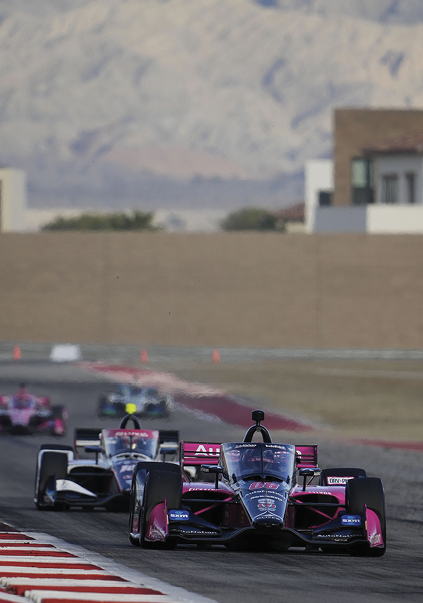
Helio Castroneves driving the
#06 Meyer Shank Racing Honda
Olvey: Helio, I want to congratulate you on all that you have accomplished.
Castroneves: It has been a long ride, Steve. They keep trying to retire me, but I keep going.
Olvey: Talk about resilience. You are a never say no guy.
Castroneves: Absolutely. You know me. I appreciate the kind words. I remember, Steve, when you taught me how to water ski. You were probably in your 60s and you were an incredible teacher. When did you stop skiing?
Olvey: I hurt my knee and needed surgery, but I was water skiing into my 70s.
Schner: Helio, if Steve didn’t stop until his 70s, that means you have lots of years left on the racetrack.
Castroneves: That’s a good point. It is always a difficult decision as to whether to keep going and pushing, especially when you had such an amazing organization behind you for so many years in Team Penske. I had felt that my time with Team Penske was coming to an end which is part of life – nothing lasts forever. I think that Team Penske wanted me to stay with them and to be around to help mentor and work with the younger drivers, but I was just not ready to stop racing. I felt that I had unfinished business on the racetrack, and I am glad that I made the decision to continue since things have been going very well.
I feel like I am enjoying the sport more now. When you are young, you feel that you have something to prove and you want to show what you can do, but now it is different. I do not have to prove anything to anybody. I remember one of my teammates who was never very good at practice, but then when it was race time, he was right on. He was able to do it at the right time. I had trouble understanding how he did that at the time, but now I do. As you get older, you get better at strategy and staying calm and having fun.
Olvey: I agree, Helio. I feel that you are having more fun now than you were 10 to 12 years ago.
Castroneves: I think that is true. I always enjoyed going places and talking to fans, but now I take more time and really appreciate those interactions. It is also important to note that I now have a daughter and fiancé, and having a family to share it with makes everything that much better.
It has also been exciting to experience being with a new team. I had an amazing run with Team Penske which was a large organization with many resources. When I joined Meyer Shank Racing, it had roughly 20 employees and today has about 50. This is a much different vibe than what I was accustomed to with Team Penske. Mike Shank and Tim Meyer are amazing people and they want to win as bad as anybody. They believe in me, and I believe in myself, and we want to keep doing what we are doing.
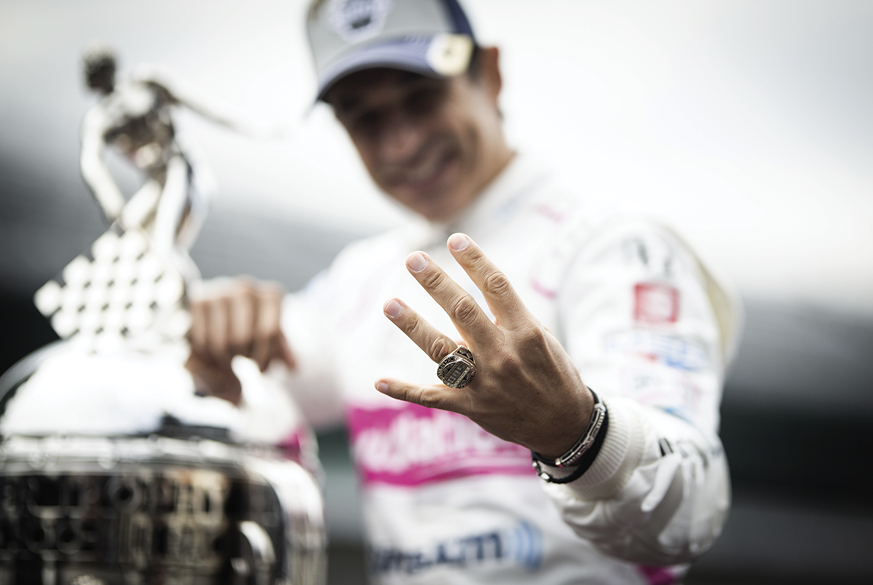
Helio Castroneves celebrating his fourth Indianapolis 500
win in the Meyer Shank Racing Honda
David, it is interesting to think back to when Steve and I first became friends when I joined IndyCar in 1998. As I mentioned earlier, I remember back then when he taught me how to water ski. I was in Miami and he was so generous to take the time to show me around. When you are in Miami, you need to enjoy the water, and I was coming from a place in Brazil where there is no water. In racing, when I think back to the biggest crash that I had to this day, it was at a time when we did not have all of the safety aspects we have today. We were racing in these incredible machines that went super-fast, and when I had that crash, because of my friendship with Steve, I knew all of the protocols for when you may have a concussion. Steve had taught me the questions asked, such as “what is your name, where are you?” The first person to show up when I had the crash was Steve, and the first words he said were, “are you OK?” I was gasping for air because the impact is so enormous you don’t have any air. I said to Steve, “my name is Helio Castroneves and I am from Miami.” Steve said, “he is OK.” I will never forget that crash – it was a big one – and I will never forget what Steve taught me and how Steve was the first one there when it happened.
Schner: Helio and Steve, will you discuss how far the safety measures in auto racing have come?
Castroneves: I actually think when I started in 1998 that the safety aspect was incredible. The technology was amazing, and I think it was the high level of safety that allowed me not to injure my back or even worse when I think back to the crash I just mentioned. Steve would be the best person to talk about the safety levels before I started in 1998.
Olvey: It was terrible in those early days. It was really my partner, Dr. Terry Trammell, and I who challenged everyone in the sport to make progress in auto racing safety. We got involved with many expert people in Europe and the United States and started to implement things that made a huge difference. Cars today are so much safer than they were 20 years ago – it is truly phenomenal.
Schner: Helio, how much of your success in auto racing do you attribute to the mental aspect and your ability to be resilient?
Castroneves: In any sport, and especially in racing, you need to use strategy to put yourself in the best position to win. I would say that probably 75 percent is mental – the ability to recover from a crash, the ability to manage very stressful moments, the ability to learn from your mistakes. Clearly, to be able to sustain the physical requirements of auto racing is critical, and your body needs to be prepared to handle these amazing cars over the two to three hours of a race. When your body is not at its best and you are not physically prepared, things can go very badly. In order to be prepared and to be successful in auto racing, it is the combination of mental strength and physical strength that is required.
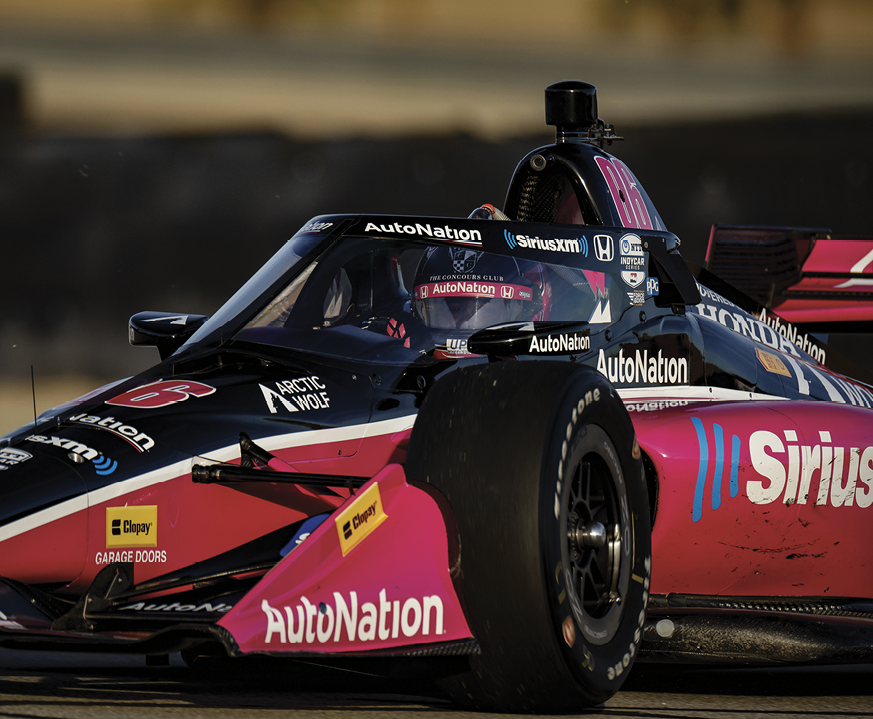
Helio Castroneves behind the wheel of the
#06 Meyer Shank Racing Honda
Schner: Helio, you mentioned your current team, Meyer Shank Racing. How was the transition from Team Penske to Meyer Shank Racing?
Castroneves: I was leaving a place that told me what to do, and went to a place where people would ask me what to do. This is a big difference, and it was a big change for me since I was used to being given the helmet and being told what to do. When I came to Meyer Shank Racing, they wanted to take advantage of my knowledge and experience over many years to improve and build for the future. In our first race, which was Indianapolis, I remember asking for a lot of things and the team owner, Mike Shank, was so supportive in making it happen. I had so much confidence in the team, but I also knew that if they were going to provide me with everything I asked for in order to be successful, I needed to win. That is what happened.
I remember that this was similar to my time at Team Penske with Roger Penske. While you didn’t need to ask for anything since they already had everything, Roger would make sure that you had the tools necessary to win, and he expected you to make it happen.
Schner: Helio, while much of the credit for winning deservedly goes to the driver, is it well-understood how critical the pit crew and others on the team behind the scenes are to being successful?
Castroneves: I always make sure that the people on our team are well recognized. I have the opportunity to represent the team and to be a spokesperson on their behalf, but without the preparation and the expertise of every member on the team, it is not possible to be successful. This is a team sport, and as a driver you are representing the team.
Olvey: Another key aspect to being successful is to never look back. It is about looking down the road and making things better, not looking back and thinking about what has already been. A successful team works together to move forward, and this is one aspect that has always been a part of Helio’s career.
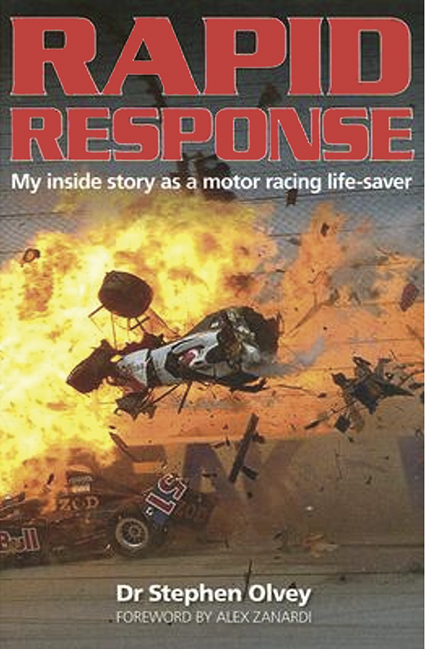
Castroneves: Steve, this is similar to your work with Dr. Trammell and the importance of the team that you built.
Olvey: Terry and I have been together more than 40 years, and we got to the point when everyone said that we didn’t have to talk to each other when a crash would happen at a race. We were together doing this for so long that we knew what each other were thinking which allowed us to get things done quicker. Similar to racing, it is about each of us doing what we do best and each member of the team working together to achieve a goal.
Castroneves: You know, David, Steve and Dr. Trammell have saved many lives in auto racing. I remember a horrific accident with Alex Zanardi roughly 20 years ago, and without Steve and Dr. Trammell, I do not think Alex would be here today. Alex had to have both legs amputated, but he has gone on to be a Paralympic champion.
Olvey: Alex is the first person to ever survive a bilateral above-knee amputation.
Schner: Steve, you have had a remarkable career. Do you take moments to reflect on what you have accomplished?
Olvey: Terry and I talk about what we have done, but the reality is that when someone needed us, we just did it. We were able to get things done quickly and correctly, and this resulted in better results. Time is critical when you are working to save lives, and Terry and I are very proud of what we were able to accomplish.
Schner: Helio, with all of the wins and success on the track, where do you put your win on Dancing with the Stars?
Castroneves: It was such a great experience and I received so many messages from Steve and people in the racing community supporting me when I was on the show. I have to admit that when it comes to dancing, I am retired. It was really fun, and I had a great partnership with Julianne Hough. It is a great show, and I had an amazing experience.
Schner: Helio, how difficult will it be for you when the time comes to retire from auto racing?
Castroneves: People ask me how long I am going to race, but I really don’t know. I do not want to be obligated to a certain time or date. For me, it is about passion and as long as the passion and desire is there, I will continue to do it. I am surrounded by amazing people and I am having a great time. I do not want to be in racing just to go around the track – I want to be competitive and to challenge myself to win each race.![]()